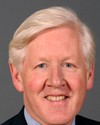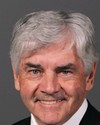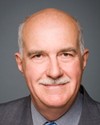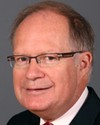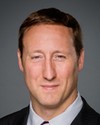Thank you, Mr. Chair.
I too want to welcome the two ministers and the Chief of the Defense Staff. I would also add, having traveled to Afghanistan on several occasions and having seen developments and having seen Canadian troops develop, that in fact, they are doing extraordinary work. Mr. Chair, I also want to take this opportunity to wish the Royal 22nd Regiment good luck. As the Chief of the Defence Staff knows, I am myself a member of the Royal 22nd Regiment, I have trained with the troops, and we are very proud of the regiment in Quebec. So we wish them good luck.
Those were the compliments, now here is the criticism. Mr. Chair, for the past six or seven years I have been hearing the same old song. The words are almost always the same. I have listed only three: "government priorities", "positive developments", and in this case, reference is made to the document that has been presented. We have also often heard that "progress has been made and we have reached a positive turning point and from now on it will go better".
I have here a study by the Center for Strategic and International Studies which says almost exactly the opposite of what you have just told us. I will describe the slides, the tables which seriously compromise your point of view. The information that I am sharing with the committee does not come from "idiots", these are documents from ISAF—the International Security Assistance Force in Afghanistan—from NATO and from the Afghanistan NGO Safety Office. I am going to describe seven or eight tables that I have, which show exactly the opposite of what you have just said.
With respect to the escalation in the war, there has been a sharp increase in mines, improvised explosive devices, ambushes, mortar attacks and rocket attacks. Since 2004, there has been a progression and it continues.
Another table is entitled: "Time is Running Out". Mr. Chair, on that page there are tables from 2005, 2007 and 2009 which show that kinetic incidents, in other words explosions and so on, have significantly increased in Afghanistan and are taking place almost everywhere in the country in 2009.
The next title is: "Where the Fighting Is: 2009". There are red areas which indicate combat zones, and they cover a very significant part of the country.
The table entitled "Insurgent Influence and Capability by District" is covered in red and orange areas which illustrate the influence of the Taliban in Afghanistan, and those areas cover three-quarters of the country. So that is not extraordinary progress at all.
I have another table dealing with monthly attacks launched, and they are constantly on the rise. In 2006, there were 387 per month, and there are 1,319 monthly attacks in 2010. The situation is not good at all.
Another table deals with incidents caused by improvised explosive devices in Afghanistan, and at the end of 2009, the curve goes straight up. So that is not good either.
I also have information on the number of attacks by region: 963 in the south of Afghanistan in 2008, compared to 2,570 attacks in 2010 in the same region.
The number of members of coalition forces who have been killed in action is also sharply increasing.
Explain to me why, all this time—and these tables date back to 2004—we are being told that all is fine, that everything is dandy, and yet these tables show the contrary. The Center for Strategic and International Studies is internationally renowned, and I believe that these are valuable reference documents. Tell me why you have continued to say the situation is rosy since 2004?

